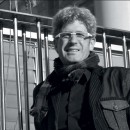Recycling is a central pillar of efforts to build a sustainable, net-zero economy. In a recently published paper in ‘Resource and Energy Economics’, Gilles Lafforgue (Toulouse Business School), member of TSE Energy & Climate Center and his coauthor examine the recycling opportunities of an industrial sector facing constraints in terms of resources, greenhouse gas (GHG) emissions, and waste disposal. Addressing the problem that recycled inputs – despite their benefits – still come with GHG emissions, their model gives a better understanding of the complementary nature of efforts to mitigate climate change and resource scarcity.
What is the circular economy?
The European Parliament defines this concept as a “model of production and consumption, which involves sharing, leasing, reusing, repairing, refurbishing and recycling existing materials and products as long as possible”. By reducing waste and recycling materials, the circular economy aims to create further value and a more sustainable economical model. While early economic studies on secondary materials focused on recycling’s ability to save extracted resources, economists have now begun to consider recycling’s ability to mitigate waste pollution and GHG emissions.
How does your paper define the objectives of recycling?
We examine the recycling opportunities of an industrial sector facing environmental, resource and climate constraints. In this context, we must consider three different balances: a material balance in order to examine the reduction of natural resource consumption and waste; a carbon balance for the topic of climate change; and, an economic balance for the evolution of consumption. Hence, the environmental objectives of recycling go in three different directions: reducing overconsumption of natural resources that could lead to economic difficulties; reducing waste that is costly to manage for both public and private entities, and poses a threat to the environment; fighting against climate change and especially GHG emissions.
What about the harmful impacts of recycling?
Recycling can indeed harm the environment, in particular because of the extra energy required by this activity and its resulting potential GHG emissions. This additional externality leads to new arbitrations we describe in our model: in most cases, recycling is a way of reducing the use of resources with a high carbon footprint, but recycling is still the source of GHG emissions. In France, recent studies show that industrial processes are often highly carbon intensive compared to recycling industries. However, recycling does not appear to be the ideal clean substitute to regular production: recycling produces its own emissions; there is a need in initial production from a regular source; and, recycling comes with a cost. These environmental considerations contribute to the current policy framework, with many countries implementing emissions reduction targets that affect polluting industries.
How do you analyze the interaction between climate change mitigation, resource preservation, and reduction of waste?
We model the full lifecycle of a manufactured good that can be produced from a virgin exhaustible resource or from recycled materials, these two inputs being taken as perfect substitutes. We then successively introduce two negative environmental externalities arising from the good’s production and consumption. First, we examine waste accumulation that harms the economy through a specific damage function, before adding cumulative GHG emissions that are constrained by an exogenous carbon budget. Consequently, we observe that a third source of (positive) externality must also be considered as long as there is no waste market, as consumption of the final good provides a waste stream which can be reused thanks to recycling.
What can we learn about the optimal use of resources?
Depending on initial characteristics of the industrial sector, the optimal path can be divided into phases of virgin and recycled production, with a potential switch of inputs if recycling becomes more socially profitable. This change occurs when the scarcity of the virgin resource prevails and/or private costs favor recycling. A change of inputs can also occur when there is a climate constraint and a sufficiently large difference between emissions rates, especially compared to the fixed difference between private delivery costs of inputs. In parallel, the social planner will develop a recycling strategy, such as it alleviates the cost of waste accumulation and allows for production from a recycled input. This leads to inverse U-shaped recycling programs, where it is optimal to increase recycling at first, then decrease it. When the marginal cost of recycling is too high, it leads to phases where the recycling rate is zero. In parallel, under certain conditions, production shows catch-up phases at the end of the program, as full marginal costs start decreasing.
We also show that in a competitive market economy, this optimal outcome can be implemented by a set of tax-subsidy schemes. Taxation based on GHG emissions must be introduced, in addition to a tax-subsidy system based on waste and stock replenishment, as demonstrated by the Extended Producer Responsibility programs currently implemented for certain products.
Do you consider recycled inputs of inferior quality?
Our model is mainly focused on metal industries, where strong GHG emissions asymmetries and perfect substitution are relevant hypotheses. In our appendix, we address other constraints on recycling: the existence of a scrap value for waste, a decoupling of GHG emissions between collection of waste and transformation into an input, and a limited capacity for the stock of recycled input. Extensions toward other industries would require relaxing some hypotheses. Loss of quality is an important topic for research on the circular economy, especially when the efficiency of a process is studied. This is the case in the paper and cardboard industry, when each recycling loop lowers the quality of the pulp and only allows a limited amount of cycles. Lafforgue and Rouge (2019) provide the basis for understanding the optimal production path when technological progress in recycling allows for higher quality in recycled inputs.




